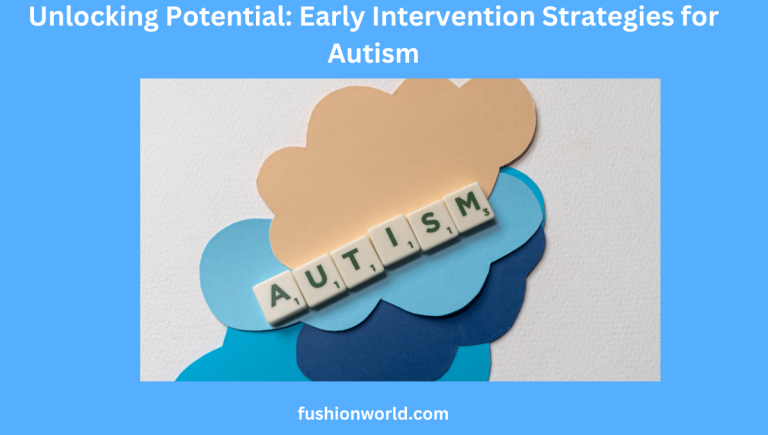In this article, we will explore not only the critical significance of early diagnosis and intervention for children with autism but also delve into a comprehensive examination of various therapeutic approaches that have the transformative power to reshape their lives for the better.
The Profound Significance of Early Intervention
Imagine, if you will, the construction of a grand edifice, one that commands attention and endures through time. The foundation upon which this magnificent structure stands is crucial. Similarly, early diagnosis, often occurring before the tender age of two, represents our unique window of opportunity when it comes to children with autism. The reasons for the paramount importance of early intervention are multifold:
Harnessing Brain Plasticity: The minds of young children possess an astounding degree of plasticity. This quality facilitates the formation of new neural pathways and the acquisition of essential skills with remarkable ease.
Cultivating Social and Communication Skills: Early intervention plays a pivotal role in enhancing a child’s social interaction and communication skills, which are nothing less than the bedrock of lifelong success and fulfillment.
Mitigating Challenging Behaviors: Beyond skill development, early intervention serves as a beacon of hope by mitigating challenging behaviors, offering children alternative avenues to express themselves, and improving their overall well-being.
Exploring Effective Therapeutic Approaches
Now, let us embark on a journey through some of the most potent therapeutic approaches that can be seamlessly integrated into early intervention programs:
Applied Behavior Analysis (ABA): The science of ABA is akin to a masterful conductor orchestrating a symphony of positive change. Breaking down complex skills into manageable steps renders learning accessible. With trained therapists employing positive reinforcement to encourage desired behaviors, children are empowered to develop essential life skills that will serve them well into adulthood.
Speech Therapy: For many children with autism, communication represents a formidable hurdle. Speech therapy is a beacon of hope on this challenging path, employing a diverse array of techniques and tools to improve both verbal and non-verbal communication skills, enabling these children to express themselves effectively.
Occupational Therapy: Imagine the intricacies of daily life—dressing, eating, mastering fine motor skills. Occupational therapists are the guides who assist children in navigating this intricate landscape. Furthermore, for autistic children, occupational therapy transcends the mundane; it enhances sensory processing, reduces sensitivities, and enriches their overall quality of life.

Sensory Integration Therapy: A significant subset of autistic children grapple with sensory sensitivities or seek heightened sensory stimulation. Sensory integration therapy emerges as a beacon of hope, aiding them in the processing of sensory information, thereby reducing sensory overload and enhancing their focus and engagement with the world around them.
Crafting a Comprehensive Intervention Plan
Effective intervention, as it turns out, often involves a judicious blend of these therapeutic approaches. Yet, the lynchpin of success is a personalized intervention plan, meticulously tailored to suit the unique needs and strengths of each child.
The road to success in this endeavor necessitates close collaboration with professionals who specialize in these therapies—ABA therapists, speech therapists, and occupational therapists, to name a few. Together, they sculpt a holistic program that encompasses all facets of a child’s development.
Conclusion
Early intervention, as we have traversed in this discourse, is the master key to unlocking the potential of children with autism. By recognizing the paramount importance of early diagnosis and embracing therapeutic approaches such as ABA, speech therapy, occupational therapy, and sensory integration, parents and caregivers can provide unwavering support that paves the way for their child’s development and a higher quality of life.
It is crucial to bear in mind that each child with autism is an unparalleled individual, and the implementation of a personalized intervention plan can be the catalyst for remarkable growth and the attainment of independence. As we collectively embark on this journey, let us commence early, for it is in the early hours that we sow the seeds of a brighter future for children with autism.

